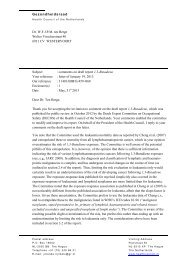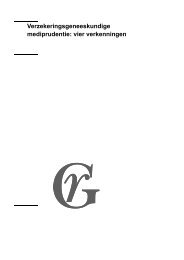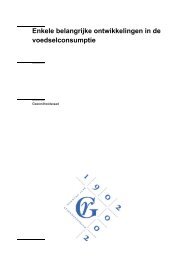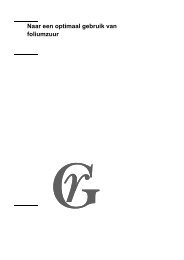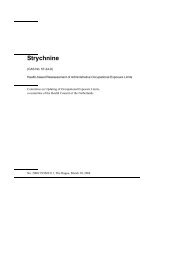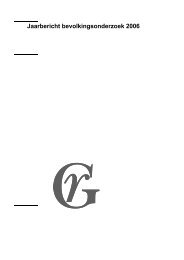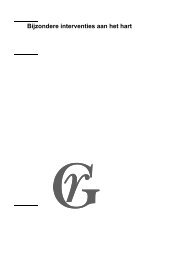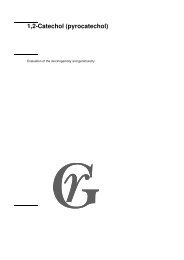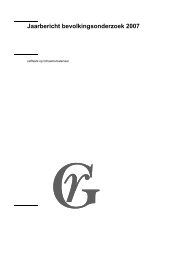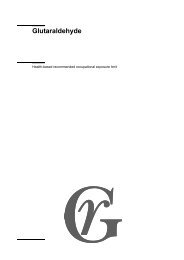Liquefied petroleum gas (LPG) - Gezondheidsraad
Liquefied petroleum gas (LPG) - Gezondheidsraad
Liquefied petroleum gas (LPG) - Gezondheidsraad
You also want an ePaper? Increase the reach of your titles
YUMPU automatically turns print PDFs into web optimized ePapers that Google loves.
Propane<br />
At very high levels, propane has CNS depressant and asphyxiating properties.<br />
Several cases of fatal inhalation of propane have been described (Avi94, Gra99,<br />
Sie90, Tso98; see also Ber95a, Cav94). Bowen et al. reported that out of 52<br />
deaths associated with accidental or intentional inhalation of volatile compounds<br />
in Virginia (USA) in the period 1987-1996, 6 cases were due to suicide and 7 to<br />
accidental overexposure in, usually, the workplace, but the compounds involved<br />
were not specified. Of the remaining 39 cases in which death was considered to<br />
be a direct consequence of inhalant abuse, 5 were associated with propane<br />
(Bow99).<br />
A 17-year-old male reported feelings of euphoria, ataxia, and lightheadedness<br />
without loss of consciousness when inhaling propane intentionally<br />
for 10-15 seconds and subsequently holding his breath for up to one minute.<br />
These sensations lasted for 1-2 minutes. This inhalation pattern would be<br />
repeated daily for periods up to 3 hours for 6 months. The man complained of<br />
severe headache and memory loss on the morning after exposure. Physical<br />
examination, including a neurological assessment, and laboratory tests (complete<br />
blood count with differential, blood urea nitrogen, serum creatinine, electrolytes,<br />
routine urinalysis, liver function tests) did not reveal abnormalities (Whe92).<br />
Several cases of cold injury from liquid propane have been published. The<br />
injuries were similar to frostbite but the symptoms occurred more rapidly with<br />
propane (Ber95a).<br />
No changes in EEGs, adrenocortical functions, pulmonary functions,<br />
neurological response, subjective response, cardiac function, cognitive response,<br />
or visual evoked response were seen in 8 men and women exposed to propane<br />
concentrations of 250 and 1000 ppm (460 and 1840 mg/m 3 ) for 1 minute to 8<br />
hours or in 2 men and 2 women exposed to 1000 ppm (1840 mg/m 3 ) propane, 8<br />
hours/day for 5 consecutive days at one week and 4 consecutive days the<br />
following week (Ber95a, Low87a, Moo82).<br />
Ten-minute exposures to 10,000 ppm (18,400 mg/m 3 ) did not produce<br />
symptoms in 6 men and women; distinct vertigo, but no mucosal irritation of<br />
nose, eyes, or respiratory tract, was observed at exposures to up to 100,000 ppm<br />
(184,000 mg/m 3 ) for 2 minutes (Moo82).<br />
Assuming a correlation between the anaesthetic potency of a <strong>gas</strong> and its air/<br />
olive oil partition coefficient, Drummond expected that a concentration of<br />
propane of 47,000 ppm (86,500 mg/m 3 ) would induce narcosis in man (Dru93).<br />
134-8 Health-based Reassessment of Administrative Occupational Exposure Limits




